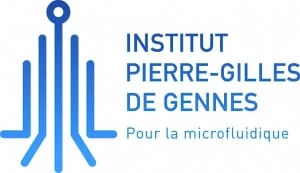Microfluidics research groups
Curious about microfluidic research in the world? Here is a list of leading microfluidics research groups. This list is not exhaustive, and the goal is to provide the visitor with an overview of the area’s state-of-the-art research and hot topics. We hope it will help you to develop new international collaborations!

Wyss Institute
(Donald Ingber, Harvard)
The Wyss Institute’s scientific operations are organized around six enabling technology platforms that focus on developing new core technologies and capabilities to facilitate the explosion of significant R&D areas in bioinspired engineering.
The platforms integrate multiple faculty members with an advanced technology team, clinical experts, and industrial partners.
The Institute platforms are:
- Adaptive material technologies
- Anticipatory medical and cellular devices
- Bioinspired robotics
- Synthetic biology
- Biomimetic systems
- Programmable nanomaterials

DeMello Group
(Andrew DeMello Microfluidics Research Group, ETH Zurich)
Primary specializations include:

Folch Lab
(Bioengineering Research Group, University of Washington)
Folch lab focuses on developing microdevices that advance fundamental neuroscience and translational cancer applications. Its mission is to make microfluidic devices as intuitive as smartphones and make them readily available to biomedical scientists to enable novel quantitative experiments, diagnostics, and therapies.
Research interest:
Albert Folch interview

Fujii T. Lab
(Teruo Fujii Microfluidics Research Group, Tokyo University)
Fujii microfluidics research group has been studying microfluidic devices and microfluidics since its establishment in 1999.
While the topics range from essential technologies to applied research, in recent years, this lab has put more and more intent on six research poles:

Pierre Gilles de Genes Institute
(Patrick Tabeling Microfluidics Research Group, IPGG)
A large microfluidic platform in Paris between several prestigious French laboratories specialized in microfluidics.
The main research topics are:

Mc Caroll Lab
(Steve McCaroll Microfluidics Research Group, Harvard Medical School)
The dropseq technology comes from this laboratory. It was developed to improve the speed and to lower the cost of sequencing the human genome.

Quake Lab
(Stephen Quake Microfluidics Research Group, Stanford)
Main research is oriented towards developing new approaches to biological measurement and applying them to problems of both fundamental and medical interest.
Areas of interest include:
The Quake valves were first developed in this lab.

Stanford Microfluidics Laboratory
(Juan Santiago Microfluidics Research Group, Stanford)
The microfluidics research group is focused on the following activities:
Capacitive deionization (CDI) removes salt and ionic toxins from water, creating safe drinking water.
Automation, optimization, and miniaturization of chemical and biochemical analyses, particularly on molecular diagnostic methods.
Fundamental challenges include:

Weitz Lab
(David Weitz Microfluidics Research Group, Harvard)
The lab studies the physics of soft condensed matter, materials easily deformable by external stress, electric or magnetic fields, or even by thermal fluctuations.
These materials typically possess structures much more significant than atomic or molecular scales; the structure and dynamics at mesoscopic scales determine the physical properties of these materials. The goal of the research is to probe and understand this relationship.
This lab studies synthetic and biological materials; the interests extend from fundamental physics to technological applications, from basic materials questions to specific biological problems. The techniques include light scattering, optical microscopy, rheology, and microfluidics.

Whitesides Research Group
(George Whitesides, Harvard)
George Whiteside was one of the first researchers involved in microfluidics. The Whitesides research group focuses on:

Complex Fluid Group
(Howard Stones Microfluidics Research Group, Princeton)
The research group studies the issues involved in the flow of thin fluid films, model problems inspired by hemodynamics, colloidal structuring of interfaces, and microfluidics. The lab uses experiments, simulations, and modeling to characterize problems quantitatively and to explore new research directions.
Whenever possible, the research group actively collaborates with the industry, scientists, and engineers from many fields.
For instance, some research has been motivated by:

Intelligent Droplet System Group
(Say Hwa Tan Microfluidics Research Group, Griffith University)
Say Hwa Tan (Patrick) research group focuses on developing intelligent microdroplet systems in microfluidics. The group uses various machine-learning techniques and active controls to manipulate droplets.
The group has established and pioneered different approaches to manipulate droplets using thermal, magnetic, pneumatic, acoustic, and electric energy. Past works include the Microfluidic Jukebox and Dancing Droplets in Microchannels.
The research group actively collaborates with the industry, scientists, and engineers from different fields and backgrounds. Interested collaborators or students can contact Dr Tan.
We hope you have found the right microfluidics research group for your project!
The Microfluidics Innovation Center can also be your industrial partner and develop microfluidic setups adapted to your needs.